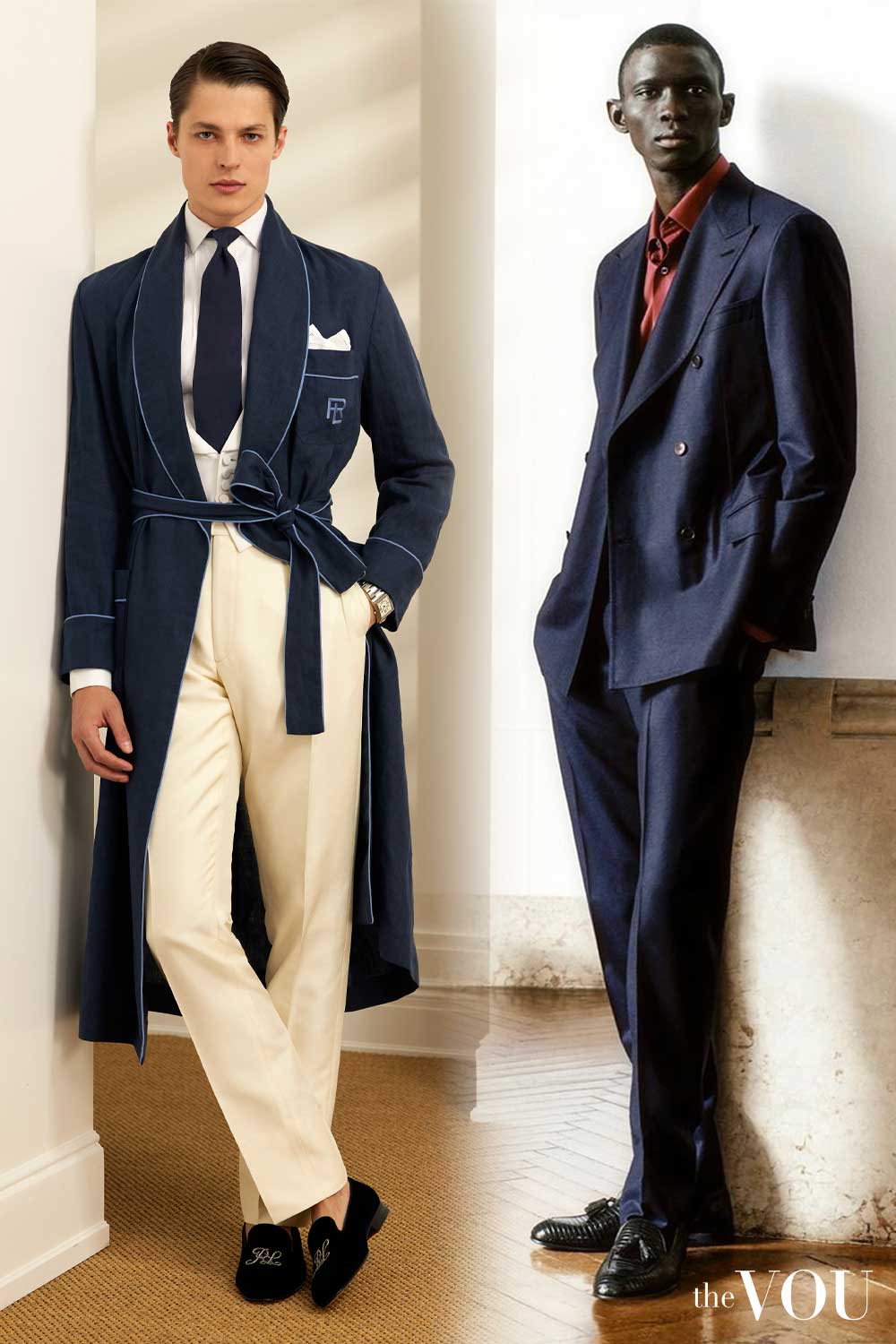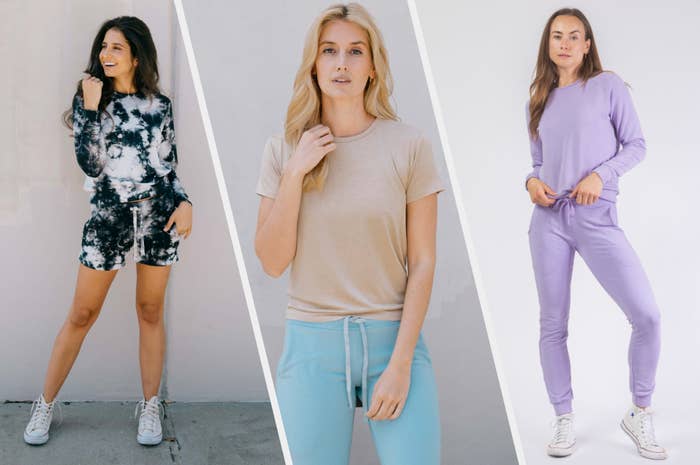The Science Behind Breathability in Branded Clothing Materials
The Science Behind Breathability in Branded Clothing Materials
Blog Article
Recognizing Apparel: The Significance of Textile Options in Your Wardrobe
The selection of fabric in garments plays a pivotal role in both aesthetics and performance. Various products offer varying levels of comfort, toughness, and breathability, straight affecting the user's experience. Understanding these nuances can boost one's closet noticeably. Yet, lots of neglect just how these selections can affect not just individual design, however also sustainability. What material decisions could redefine your closet and align it with both style and obligation?
The Function of Material in Fashion and Functionality

Usual Fabric Types and Their Qualities
When selecting clothes, understanding the attributes of typical textile types is vital for making educated choices. Cotton, a widely-used all-natural fiber, is known for its breathability, softness, and versatility, making it appropriate for informal wear and everyday garments. Bed linen, one more all-natural choice, boasts superb moisture-wicking residential properties and a distinct appearance, perfect for cozy climates.Wool, often favored for its heat and longevity, differs in excellence; merino woollen is soft versus the skin, while coarser kinds are made use of for outerwear. Artificial textiles like polyester and nylon provide durability and resistance to wrinkles, making them preferred for activewear and travel garments. Finally, blends, which incorporate natural and artificial fibers, can boost capability while keeping comfort. By identifying these fabric features, people can select clothing that aligns with their way of living and aesthetic preferences.
Breathability and Comfort: Choosing the Right Fabrics for Different Climates
Choosing the best fabrics for various environments can considerably boost comfort and total wearability. Breathable products are essential in hot environments, as they permit air circulation and moisture dissipation. Fabrics such as cotton, linen, and moisture-wicking synthetics effectively draw sweat far from the body, maintaining the user cool and dry. Alternatively, in cooler environments, thicker textiles like woollen or fleece give insulation while keeping breathability, ensuring heat without overheating.Additionally, the selection of fabric weight plays an important duty; lightweight materials are preferable for summertime, whereas much heavier options are suited for wintertime wear. Comprehending the one-of-a-kind buildings of each fabric makes it possible for individuals to dress properly for varying weather. Ultimately, picking breathable and comfy textiles customized to certain climates can significantly enhance day-to-day convenience and enhance the overall experience of using garments.
Durability and Care: Just How Fabric Influences Durability of Your Closet
Choosing the appropriate materials can considerably impact the resilience and treatment demands of a wardrobe. Fabrics such as cotton and polyester are known for their strength and convenience of maintenance, making them suitable for day-to-day wear. On the other hand, fragile materials like silk and lace need even more careful handling and specialized cleansing methods, which can raise the time and initiative required for care. Branded Clothing.Durability is additionally influenced by the textile's weave and finish; firmly woven materials tend to stand up to damage far better than freely woven choices. Additionally, artificial blends commonly give improved resilience, combining the very best top qualities of several fibers.Understanding the care instructions for every fabric is necessary, as inappropriate washing or drying out can bring about premature wear. Eventually, choosing durable products can result in a longer-lasting wardrobe, reducing the frequency of replacements and contributing to a much more sustainable fashion choice
The Impact of Material on Fit and Shape

Sustainable Fabric Options: Making Eco-Friendly Choices
The effect of material expands past fit and silhouette to include environmental variables, prompting a growing rate of interest in sustainable material choices. Green materials, such as organic cotton, hemp, and Tencel, are getting grip amongst customers who prioritize sustainability in their wardrobes. These materials are commonly generated with less chemicals and water, lowering their ecological footprint.Additionally, recycled fabrics, made from post-consumer waste, offer an his response ingenious option to the textile sector's contamination issue. Brands significantly accept openness in their sourcing methods, allowing customers to make enlightened decisions about their purchases.Choosing lasting textiles not only sustains honest practices yet also motivates the fashion business to embrace more responsible production methods. As recognition of ecological problems increases, people are prompted to review the long-term effect of their fabric selections, promoting a motion in the direction of a much more lasting and ecologically aware technique to fashion.
Raising Design: Just How Fabric Can Transform an Attire
While numerous might concentrate on color and cut when choosing a clothing, the selection of textile plays a crucial role in boosting design and enhancing general look. Various materials communicate distinctive moods and messages; for instance, silk exudes luxury click over here now and sophistication, while jeans offers an informal, unwinded ambiance. The appearance and drape of a fabric can dramatically alter the silhouette, with structured materials supplying a polished appearance and softer ones producing a much more fluid, relaxed aesthetic.Moreover, the weight of the textile affects wearability across seasons. Lightweight fabrics like bed linen and cotton are perfect for summertime, while heavier materials such as woollen and velvet supply heat and sophistication in chillier months. Recognizing textile properties, such as breathability and stretch, also empowers people to make educated choices that boost comfort without jeopardizing style. Inevitably, the ideal fabric can transform an outfit from regular to extraordinary, making it an important factor to consider in any kind of closet.
Often Asked Concerns
Exactly how Do I Recognize the Textile Web Content of My Garments?
To determine fabric content, one can examine treatment tags, conduct melt tests for fiber recognition, or seek advice from fabric examples. These methods aid separate products, making sure educated options for apparel treatment and maintenance in day-to-day wear.
Can Material Choice Affect My State Of Mind or Confidence?
Material option can considerably impact a person's mood and self-confidence. Branded Clothing. Particular materials may evoke feelings of comfort or sophistication, while others can feel unflattering or restrictive, inevitably affecting self-perception and emotional well-being throughout the day
What Fabrics Are Best for Sensitive Skin?
For individuals with sensitive skin, all-natural fabrics like bamboo, cotton, and bed linen are commonly suggested. These products are breathable, hypoallergenic, and much less most likely to cause inflammation, making them ideal choices for convenience and skin health and wellness.
How Do I Appropriately Clean and Look After Different Fabrics?
To properly care and wash for various fabrics, one need to consider each material's particular demands, consisting of temperature level settings, cleaning agents, and drying out methods, making sure durability and keeping the material's initial qualities for excellent use.
Are There Details Fabrics for Athletic or Efficiency Put On?
Sports or performance wear usually uses materials such as spandex, polyester, and nylon. These products are made for moisture-wicking, breathability, and flexibility, enhancing movement and convenience throughout exercises while providing durability and assistance. On the other hand, in colder climates, thicker fabrics like wool or fleece provide insulation while keeping breathability, making certain heat without overheating.Additionally, the selection of textile weight plays a vital function; light-weight textiles are more suitable for summer season, whereas heavier alternatives are fit for winter months wear. In contrast, fragile products like silk and shoelace need more cautious handling and specialized cleaning approaches, which can increase the time and initiative required for care.Durability is additionally influenced by the click for info textile's weave and coating; firmly woven materials tend to withstand wear and tear better than loosely woven choices. In comparison, rigid materials can limit motion however offer a classic, polished look.Moreover, the density and structure of the material can influence the aesthetic perception of body form. The impact of material extends past fit and silhouette to include ecological factors, triggering a growing interest in lasting material options. The texture and drape of a textile can considerably modify the shape, with organized fabrics offering a sleek appearance and softer ones producing a more fluid, unwinded aesthetic.Moreover, the weight of the textile affects wearability across periods.
Report this page